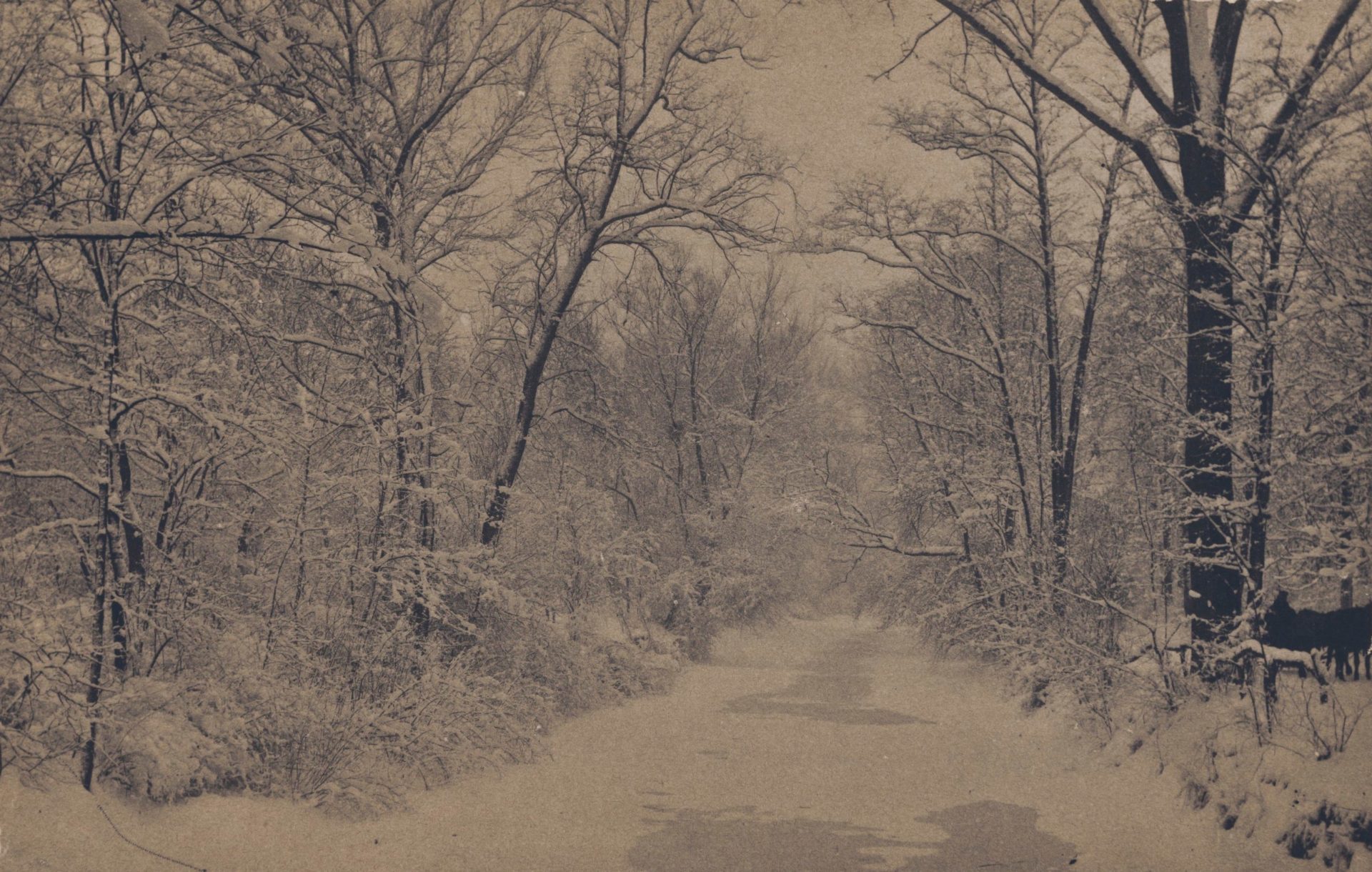Biography
Alfred Stieglitz was an American photographer, gallery owner and patron of the arts. He was one of the most important persons who presented to the American public the influences of the European avant-garde on American art. To this end, he used his position as editor of the magazine Camera Work, with which he wanted to promote photography and legitimize it as an art form. In addition, he was director of the famous “Galerie 291” and later of the “Intimate Gallery” and “An American Place”. In both the magazine and the galleries he presented many of the most outstanding photographs of his time.
He studied mechanical engineering in Berlin from 1882 and was able to benefit from Hermann Wilhelm Vogel’s knowledge of photography as a student of his father. At the age of 24 he won first prize in a British photography competition, where P. H. Emerson was on the jury. This was the first of a good 150 medals he was to receive in his life.
In 1889 Stieglitz moved to New York, where he began to make his work accessible to a broad public, wrote about photography and was an honorary member of the community “The Linked Ring”. His early works were mainly influenced by Pictorialism, as known from France and England.
In 1902 Alfred Stieglitz founded the “Photo-Secession” and opened his first gallery. In his own works he soon rejected any form of manipulation such as retouching and instead often photographed in rain, fog or snow to achieve the desired soft contours and effects and to show that the right view is more important than just the equipment or the external conditions. His most famous photographs from this period are probably The Terminal (1892), Winter on Fifth Avenue (1893) and Flatiron Building (1902/1903).
For Winter on Fifth Avenue he stood, according to his own statements, more than three hours in the freezing cold on the street, waiting for the right moment. In Flatiron Building he saw a symbol for the emerging America, which at that time was in a state of upheaval that could not leave art untouched.
Camera Work, a magazine published four times a year and founded by Stieglitz in 1903, existed until 1917 and contained not only photographs but also reviews and reproductions of avant-garde artists. In 1905 Alfred Stieglitz and Edward Steichen founded the “Galerie 291” (named after her address: 291 Fifth Avenue), where artists such as Georgia O’Keeffe, Matisse, Cézanne, Rodin, Braque, Hartley, Marin, and Dove exhibited. Stieglitz asked O’Keeffe to pose for him, and the first photos were taken with her as a motif.
An intense love affair developed between the two, during the course of which Stieglitz divorced Emmeline Obermeyer in 1918 after 24 years of marriage. From 1918 to 1937 Stieglitz produced over 300 photographs of O’Keeffe. They married in 1924. From 1922 Stieglitz frequently photographed cloud formations, which he called “equivalents” and regarded as symbols of his philosophy of life.
After the end of the “Galerie 291”,Camera Work and “Photo-Secession” in 1917, which were abandoned for financial reasons due to World War I, Stieglitz opened the “Intimate Gallery” (1925-1929) and “An American Place” (1929-1946), where mainly paintings, sculptures and graphics were exhibited. His later work includes, among other works, countless studies by Georgia O’Keeffe (he photographed them from over 900 different perspectives) and views of New York.
The group of intellectuals that gathered around him in the first quarter of the 20th century had a decisive influence on artistic development in America and became known around 1913 through the world-famous “Armory Show”. Stieglitz’s works inspired not least writers such as William Carlos Williams, who was also engaged in precisionism and knew Stieglitz personally. Thus, at that time, the visual and literary arts reached out their hands and were united in essence as rarely before.
